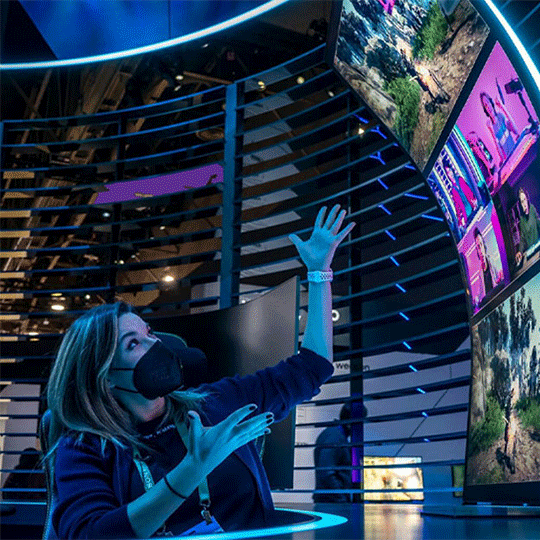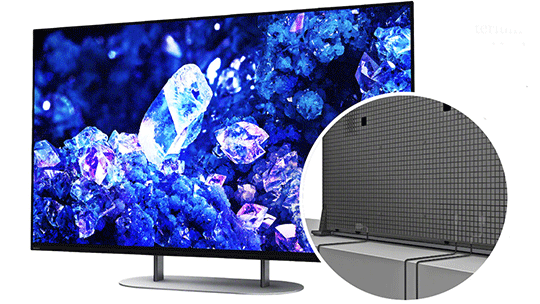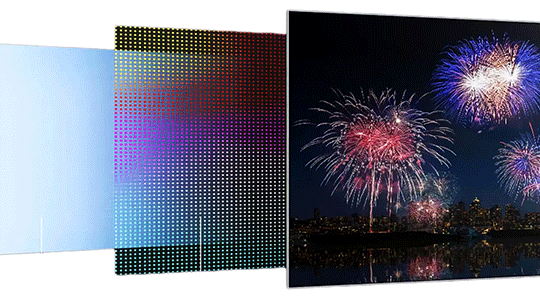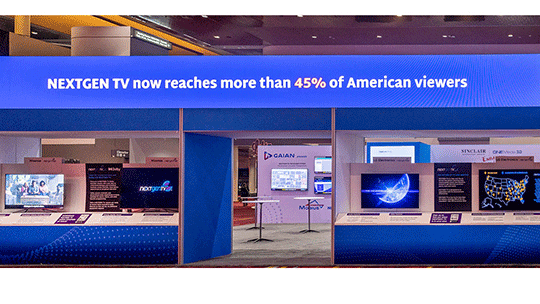
Samsung and LG debuted their first mini-LED models last year at CES, and added more to their lineups at CES 2022. TCL previewed an 85-inch 8K mini-LED prototype, claimed to be the thinnest at just 3.9mm.
The Samsung Odyssey Ark 55-inch curved gaming monitor can rotate a full 90° to provide a vertical view on its 4K screen. It uses the same base technology as the company’s Odyssey Neo G8 with Quantum Mini LED backlighting. Neo G8 boosts the resolution to 4K while setting a higher refresh rate at 240Hz and boasts a 2,000-nit peak brightness and a million-to-one static contrast ratio, bringing out subtle details for increased game immersion.
Sony introduced its first mini-LED models, including a version with 8K resolution and high contrast from over 2,000 local dimming zones, all controlled by its XR Cognitive Processor. Local dimming is where the TV dims the LEDs behind dark sections of the image to create a better contrast ratio between the bright parts of the image and the dark parts. Standard processors can only analyze color, contrast and details individually. With Sony’s Cognitive Processor, a TV can cross analyze simultaneously, picking out the most important elements of the picture you’re watching.
A MicroLED is very different from a mini-LED. The former does not use a backlight to light up the display. In that sense microLED is closer to an OLED TV than a mini-LED as OLEDs also do not use backlights. MicroLED TVs, like OLEDs, light their own individual pixels. MicroLEDs are as small as 0.002 inches across, about 1/100th the size of a conventional LED, small enough to function as individual pixels. At CES LG showed off its new MicroLED screen, a 136-inch behemoth.

At CES, Sony revealed its first QD-OLED TV, the Sony A95K. It combines an organic light-emitting diode (OLED) layer with a layer of quantum dots to enhance color range and brightness. Quantum dots absorb the light of a range of wavelengths and emit light of a different, defined wavelength depending on their size or composition. Most often red and green quantum dots are integrated into the screen architecture with a blue backlight providing illumination. Quantum dots have been used in high-end LED TVs for several years, but this year is the first time it’s been paired with OLED technology.
Samsung Display Company’s new QD-OLED TV combines a blue OLED emitter with green and red quantum dots to produce a display with highly saturated colors and high brightness. It will be available in 55- and 65-inch TV sizes, along with a 34-inch computer and gaming monitor.

LG is making the biggest consumer OLED TV yet with its expanded G2 line. The “Gallery Design” TV will be available in sizes up to 97-inches. The high-end G2 OLED series also features 55-, 65-, 77-, and 83-inch versions. LG’s latest OLED panel is called OLED evo, which the company says can get brighter than previous OLED models. This is important, because while OLED panels excel at black levels and wide colors, they can’t get nearly as bright as high-end LED-backlit LCD TVs.
LG’s OLED.EX can reportedly boost brightness by 30% by using LG Display’s deuterium and personalized algorithm-based “EX Technology,” which helps boost the display’s overall picture quality compared to conventional OLED displays.
The EX Technology applied to the OLED.EX displays uses deuterium compounds to enhance the stability and efficiency of the organic light emitting diode. Deuterium is twice as heavy as normal hydrogen and rare; only one atom of deuterium is found in about 6,000 ordinary hydrogen atoms. When stabilized, the deuterium compounds allow the display to emit brighter light while maintaining high efficiency. In addition, LG Display’s ‘personalized algorithm’ is based on machine learning technology and allows OLED.EX to be more in control of the device.
LG Display plans to integrate OLED.EX technology into all OLED TV displays manufactured at its OLED production plants in Paju, South Korea, and in Guangzhou, China, starting from the second quarter of 2022.

By Brian Markwalter
NEXTGEN TV, the go-to-market name for ATSC 3.0 television, was highly visible at CES — literally from the moment you walked into the convention center. ATSC’s NEXTGEN TV exhibit in the Grand Lobby was buzzing with activity as broadcasters, TV makers, and chipset and software providers touted advancements in NEXTGEN TV.
Hisense showcased NEXTGEN TV support in at least three models to be available in Q3 this year. Hisense joins LG, Samsung and Sony in offering NEXTGEN models. CTA’s forecast for sales of NEXTGEN TVs this year stands at 4.5 million units, reflecting the increase in brands and models across all price points.
Broadcasters are on board with NEXTGEN TV. Stations are broadcasting ATSC 3.0 signals in more than 40 markets. At CES, broadcasters announced expectations to reach 75% of U.S. households by mid-year.

I3, the flagship magazine from the Consumer Technology Association (CTA)®, focuses on innovation in technology, policy and business as well as the entrepreneurs, industry leaders and startups that grow the consumer technology industry. Subscriptions to i3 are available free to qualified participants in the consumer electronics industry.